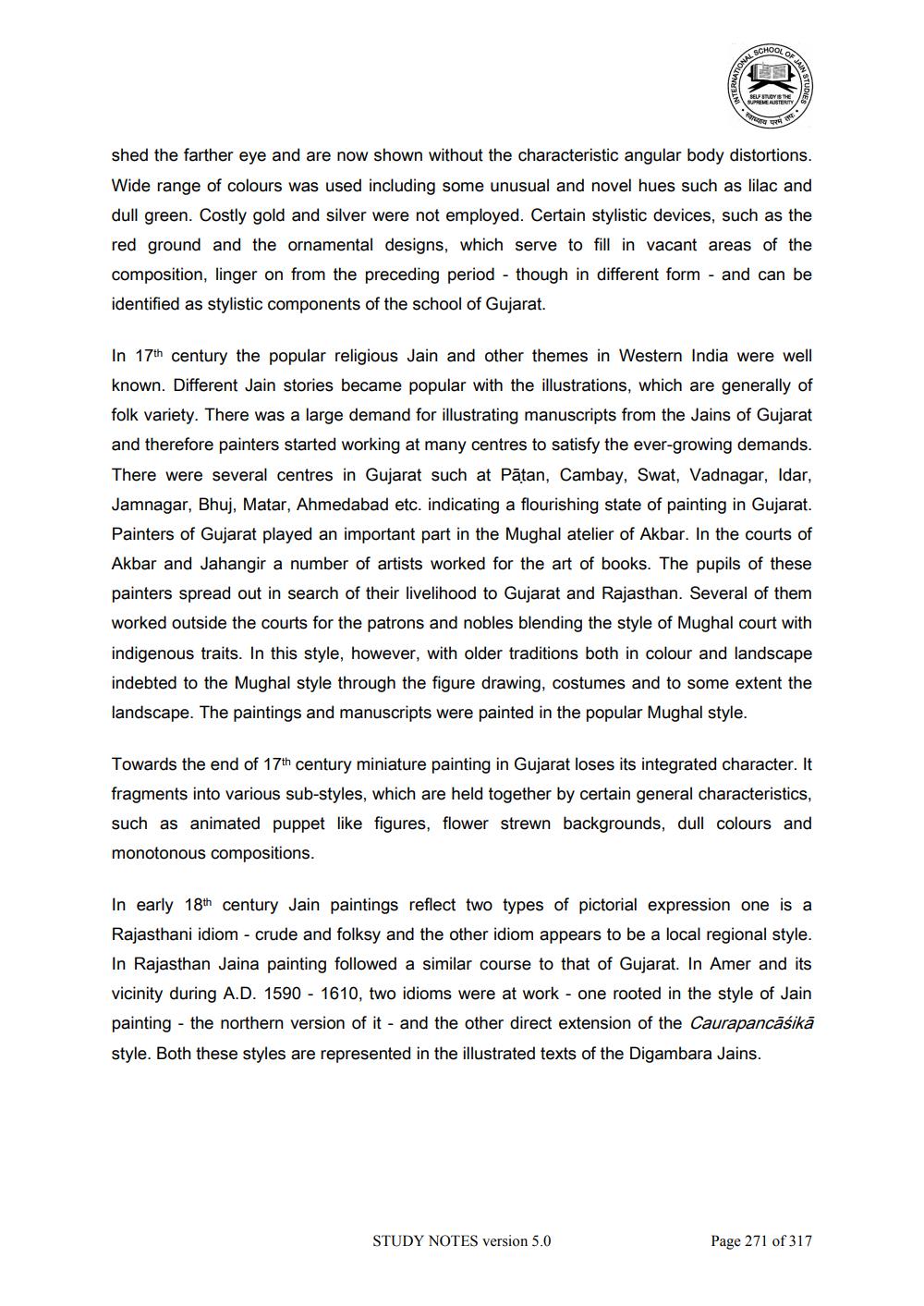________________
SCHOOL
OF
AN STUDIES
SELF STUDY IS THE SUPREME AUSTERITY
स्वाध्याय
परमे
shed the farther eye and are now shown without the characteristic angular body distortions. Wide range of colours was used including some unusual and novel hues such as lilac and dull green. Costly gold and silver were not employed. Certain stylistic devices, such as the red ground and the ornamental designs, which serve to fill in vacant areas of the composition, linger on from the preceding period - though in different form - and can be identified as stylistic components of the school of Gujarat.
STUDY NOTES version 5.0
In 17th century the popular religious Jain and other themes in Western India were well known. Different Jain stories became popular with the illustrations, which are generally of folk variety. There was a large demand for illustrating manuscripts from the Jains of Gujarat and therefore painters started working at many centres to satisfy the ever-growing demands. There were several centres in Gujarat such at Patan, Cambay, Swat, Vadnagar, Idar, Jamnagar, Bhuj, Matar, Ahmedabad etc. indicating a flourishing state of painting in Gujarat. Painters of Gujarat played an important part in the Mughal atelier of Akbar. In the courts of Akbar and Jahangir a number of artists worked for the art of books. The pupils of these painters spread out in search of their livelihood to Gujarat and Rajasthan. Several of them worked outside the courts for the patrons and nobles blending the style of Mughal court with indigenous traits. In this style, however, with older traditions both in colour and landscape indebted to the Mughal style through the figure drawing, costumes and to some extent the landscape. The paintings and manuscripts were painted in the popular Mughal style.
Towards the end of 17th century miniature painting in Gujarat loses its integrated character. It fragments into various sub-styles, which are held together by certain general characteristics, such as animated puppet like figures, flower strewn backgrounds, dull colours and monotonous compositions.
In early 18th century Jain paintings reflect two types of pictorial expression one is a Rajasthani idiom - crude and folksy and the other idiom appears to be a local regional style. In Rajasthan Jaina painting followed a similar course to that of Gujarat. In Amer and its vicinity during A.D. 1590 1610, two idioms were at work - one rooted in the style of Jain painting the northern version of it - and the other direct extension of the Caurapancasikā style. Both these styles are represented in the illustrated texts of the Digambara Jains.
Page 271 of 317




